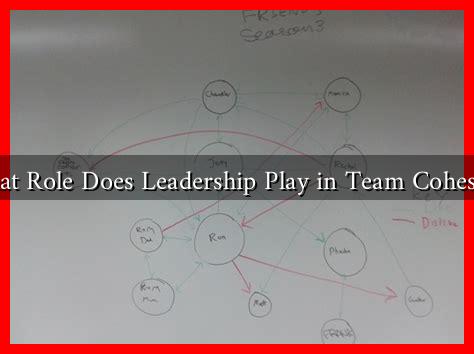-
Table of Contents
What Role Does Leadership Play in Team Cohesion?
In today’s fast-paced and interconnected work environment, the importance of team cohesion cannot be overstated. Cohesive teams are more productive, innovative, and resilient. However, achieving and maintaining this cohesion often hinges on effective leadership. This article explores the multifaceted role that leadership plays in fostering team cohesion, supported by research, examples, and case studies.
The Foundation of Team Cohesion
Team cohesion refers to the bonds that hold a group together, influencing their ability to work collaboratively towards common goals. Leadership is a critical factor in establishing this foundation. Effective leaders create an environment where team members feel valued, respected, and motivated. Here are some key aspects of leadership that contribute to team cohesion:
- Clear Vision and Goals: Leaders who articulate a clear vision and set achievable goals help team members understand their roles and contributions. This clarity fosters a sense of purpose.
- Open Communication: Leaders who encourage open dialogue create a culture of trust. Team members are more likely to share ideas and concerns, leading to stronger relationships.
- Conflict Resolution: Effective leaders address conflicts promptly and constructively, preventing issues from escalating and disrupting team dynamics.
- Empowerment: Leaders who empower their team members to take ownership of their work foster a sense of belonging and commitment.
Leadership Styles and Their Impact on Cohesion
Different leadership styles can significantly influence team cohesion. Here are a few styles and their effects:
- Transformational Leadership: Transformational leaders inspire and motivate their teams by fostering an emotional connection. Research shows that teams led by transformational leaders often exhibit higher levels of cohesion and performance (Bass & Riggio, 2006).
- Servant Leadership: This style prioritizes the needs of team members. Servant leaders focus on the growth and well-being of their teams, which can lead to increased trust and collaboration.
- Democratic Leadership: By involving team members in decision-making, democratic leaders promote a sense of ownership and accountability, enhancing cohesion.
Case Studies: Leadership in Action
To illustrate the impact of leadership on team cohesion, consider the following case studies:
- Google: Google is renowned for its strong team cohesion, largely attributed to its leadership style. Leaders at Google emphasize open communication and collaboration, fostering an environment where employees feel safe to express their ideas. This approach has led to innovative projects like Google Maps and Gmail.
- NASA: During the Apollo 13 mission, effective leadership was crucial in maintaining team cohesion under pressure. Flight Director Gene Kranz fostered a culture of teamwork and problem-solving, which ultimately led to the safe return of the astronauts. His leadership style emphasized collaboration and trust, proving essential in a crisis.
The Role of Emotional Intelligence in Leadership
Emotional intelligence (EI) is another critical component of effective leadership that directly impacts team cohesion. Leaders with high EI can:
- Recognize and manage their own emotions, leading to better decision-making.
- Empathize with team members, fostering stronger relationships.
- Navigate social complexities, enhancing collaboration and reducing conflicts.
According to a study by TalentSmart, emotional intelligence is responsible for 58% of job performance across various industries, highlighting its importance in leadership.
Conclusion: The Indispensable Role of Leadership in Team Cohesion
In summary, leadership plays a pivotal role in fostering team cohesion. By establishing a clear vision, promoting open communication, and employing effective leadership styles, leaders can create an environment where team members feel valued and motivated. The case studies of Google and NASA exemplify how strong leadership can lead to remarkable outcomes through cohesive teamwork. As organizations continue to navigate the complexities of the modern workplace, investing in leadership development will be essential for enhancing team cohesion and overall performance.
For further reading on leadership and team dynamics, consider exploring resources from the Forbes Human Resources Council.

